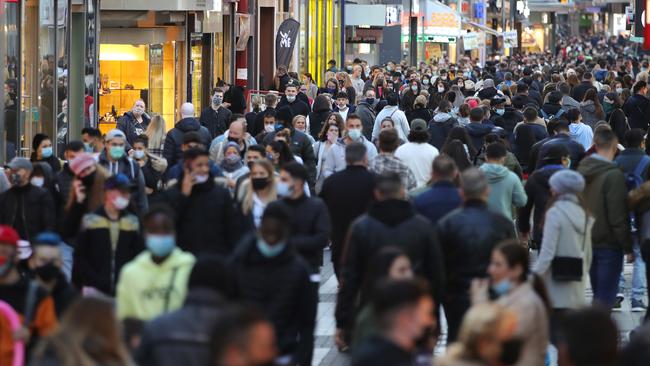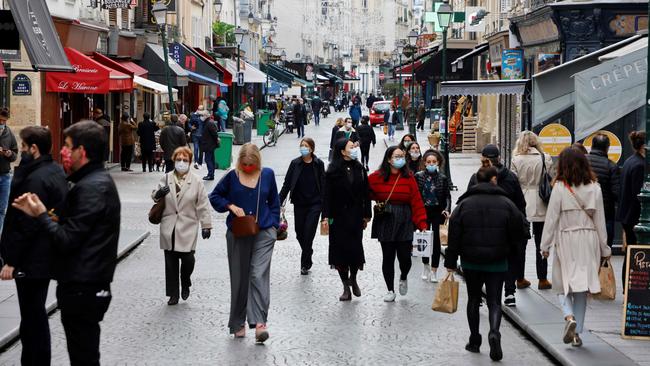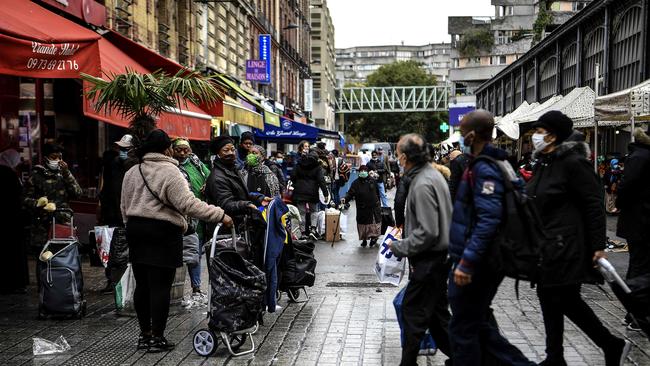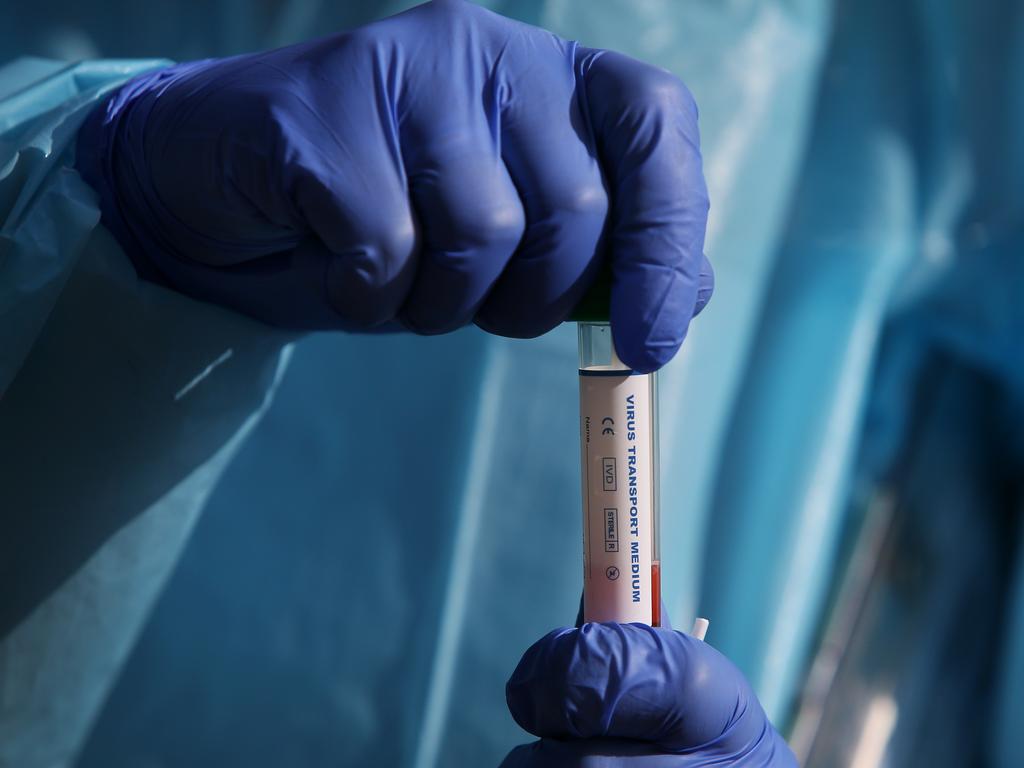As COVID-19 Surges, the Big Unknown Is Where People Are Getting Infected
The US and Europe are struggling to identify where virus infections are occurring, making targeted restrictions harder.

Western nations face a big challenge in fighting the COVID-19 pandemic: Ten months into the health crisis, they still know little about where people are catching the virus.
The problem is becoming more acute as new cases are breaking records in the U.S. and Europe and pressure grows on authorities to impose targeted restrictions on places that are spreading the virus, rather than broad confinement measures that are wreaking havoc on the economy.
In Germany, authorities say they don’t know where 75% of people who currently test positive for the coronavirus got it. In Austria, the figure stands at 77%. In Spain, the health ministry said that it was able to identify the origin of only 7% of infections registered in the last week of October. In France and Italy, only some 20% of new cases have been linked to people who previously tested positive.

Jay Varma, senior adviser for public health in the New York City mayor’s office, said 10% of the city’s infections are due to travel, 5% from gatherings, and another 5% from institutional settings such as nursing homes.
“The vast majority of the remainder -- somewhere probably around 50% or more -- we don’t have a way to directly attribute their source of infection,” Mr. Varma said. “And that’s a concern.” One reason for this deficit is that most contact-tracing systems set up to investigate infections haven’t been identifying enough contacts to map how the virus spreads. And whatever data they generate isn’t always being mined to inform how to craft more discriminating lockdowns.
Asian nations that have used contact tracing successfully to control the disease interview 10 or more contacts for each case. In the U.S., France, the U.K. and Spain, tracers are identifying fewer than four contacts for each case, according to government data.
Even when data can be gleaned from such limited and partial contact-tracing records, it is likely to be skewed by statistical distortions.

To illustrate this, Marc Lipsitch, an epidemiologist from Harvard T.H. Chan School of Public Health, points to government data in several countries showing most people are becoming infected at home. The home, while undoubtedly a driver of infections, probably tops the list, he said, because of how hard it is to trace infections that originate elsewhere.
“We may be putting too much emphasis on what we can trace...and not acting on the types of establishments that are very likely contributing but for which data isn’t as compelling,” he said.
Falko Liecke, city councillor for health and youth in Berlin’s popular Neukölln district, said his contact tracers often run into the problem that people who test positive “can’t remember or don’t want to remember” where they were exactly, and with whom, in the days before showing symptoms. A current time lag of up to a week in getting test results is making matters worse, he said.
The problem is exacerbated by the way this virus works, especially the fact that people can take up to 10 days to develop symptoms. They can also be infectious without showing any symptoms at all.
Some German cities have urged people to keep a “contact diary” that they could hand to contact tracers if they test positive.
A key blind spot is infections that are happening between strangers in settings such as restaurants. Smartphone apps that warn you if you’ve been in close contact with someone who later tests positive are supposed to help address this problem, but they haven’t been widely adopted enough to be useful, experts say.
Authorities in some European countries and U.S. states have required restaurants and bars to gather contact information from their customers, to help contact tracers if a customer later tests positive.
In France, authorities only began requiring restaurants to gather this information in early October, more than four months after the country emerged from its first lockdown. Even so, this information is rarely being used. In restaurant-dense Paris, local health authorities say they haven’t conducted a single investigation using customer data.
Without a good understanding of the settings in which the virus is most likely to be transmitted, several European countries have been forced to reintroduce indiscriminate lockdowns this autumn.
France, Germany, the U.K. and other countries in recent weeks again shut all restaurants and bars, cinemas, theatres and in some instances non-essential shops to prevent health systems from collapsing under a flood of patients. U.S. states from New York to Utah also imposed new restrictions as daily new infections in the U.S. are hitting records.
In Europe, the latest shutdowns have sparked loud debates about just how likely restaurants, in particular, are to spread infections. Scientists have warned for months that the virus tends to spread fastest in closed, poorly ventilated and crowded spaces, but many restaurant owners have argued that with adequate precautions, there is no risk.
A Berlin court this past week rejected a request by restaurant owners to overturn a shutdown ordered for the month of November. Berlin’s administrative court argued that because in 75% of cases the origin of an infection was unknown, restaurants’ argument that they aren’t “drivers” of the pandemic could no longer hold.
Partly because of the mounting economic pressure, some researchers have been trying to get a better understanding of where infections are happening, separate from authorities’ contact-tracing effort.
Researchers from Stanford University and Northwestern University have used the mobile-phone data of 98 million Americans to model how the virus spread during the first wave of COVID-19 in the spring.
The study, published in journal Nature this past week, showed that restaurants, gyms, hotels, cafes and religious organisations carried the biggest risk of spreading infections.
Germany’s Robert Koch Institute for infectious diseases this month launched a study to determine which settings carry higher risks of spreading the virus. Researchers will poll 1,200 infected people about what they did in the days before they fell ill. In France, the Pasteur Institute is working with the nation’s contact-tracing system to better understand in what environments people are catching the virus.
In Berlin, meanwhile, Mr. Liecke is putting together a team of special investigators from the Bundeskriminalamt, Germany’s equivalent to the FBI, to get to the bottom of where infections happen most.
“It’s worth a try,” he said.
--Giovanni Legorano contributed to this article.
Wall Street Journal







To join the conversation, please log in. Don't have an account? Register
Join the conversation, you are commenting as Logout